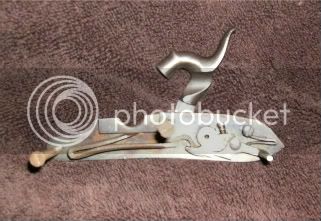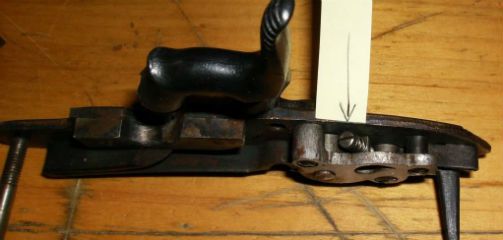So, summing it all up, the screw, axle or boss a part rotates on can be supported on only one end, or it can be supported on both ends by something called a bridle.
IMO, the term "bridle" comes from the bridle horses wear which supports both ends of the bit in their mouth.
Although the tumbler and frizzen of very early locks often don't have a bridle at all, some of them did.
Also, there are later locks made when bridles were fairly popular that did not have bridles.
Because of this, generally speaking one could say, a unbridled lock is
probably an early lock and a bridled lock is
probably a later lock but this isn't always true.
IMO, a bridled lock with the bridles supporting both the tumbler and the frizzen is a much superior lock.











